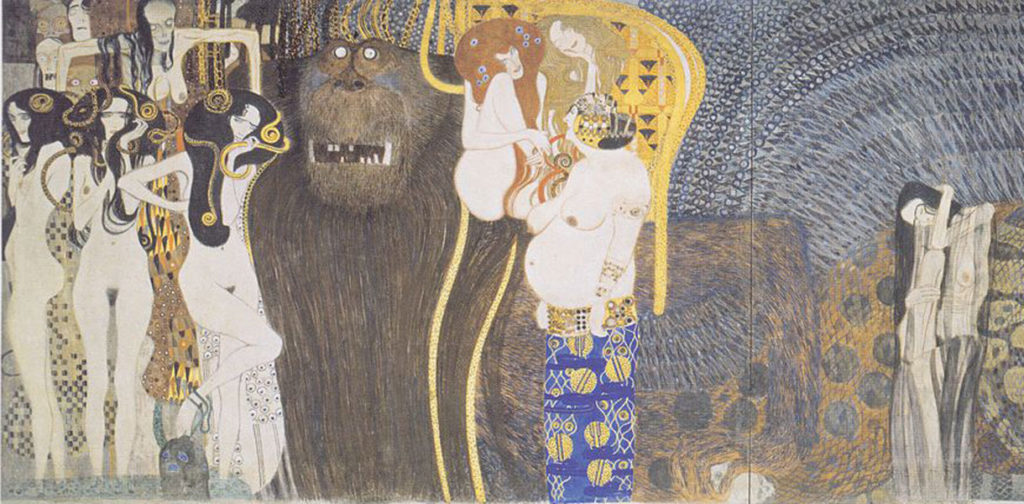Vienna Secession – Austrian Art Nouveau

At the end of the 19th century, Art Nouveau created a new style that emancipated itself from historical styles. In the center of the new style were geometric and naturalistic forms. In the German-speaking world Art Noveau was called “Jugendstil”, named after the Munich-based weekly journal “Die Jugend” (The Youth), which propagated a new art for a new way of life.
Besides Munich and Darmstadt in Germany, Vienna had become another center of the Art Noveau. Though the Austrian version of the Art Nouveau is known as “Wiener Jugendstil” or “Secessionsstil”, inspired by the artist group of the “Vienna Secession”.
Painting & Graphic Arts
The best-known artist of the Vienna Secession movement is Gustav Klimt. As one of the founding members of the group Klimt’s works “The Kiss,” “Judith” and the “Beethoven Frieze” are known all over the world today.
You can see Klimt’s and other artists’ work in permanent Klimt exhibition the Belvedere palace, the exhibition in the Leopold Museum and the exhibitions in the Secession Building with its golden leafwork dome.
Art Nouveau Architecture
When it comes to architecture the Secession Building is not the only example for Viennese Art Noveau style. Especially the architects Otto Wagner and Josef Hoffmann shaped the Austrian capital like few others. Especially Otto Wagner’s rail stations and the bridges along the former “Stadtbahn” (urban railway), today part of the Vienna metro system (Lines U4, U6 and S45), are quite famous.
Also the Majolikahaus and Musenhaus on the Linke Wienzeile (near Naschmarkt) and the Kirche am Steinhof in Vienna’s hilly western suburbs are masterpieces of Art Noveau architecture.
The story goes that the Looshaus of architect Adolf Loos at Michaelerplatz right in front of the Vienna Hofburg made Emperor Franz Josef to have the curtains of the Hofburg’s facing windows permanently drawn close. In the middle of the city – on the Graben – you can even go to the first underground public lavatories in the art nouveau style.
If you want to discover Vienna’s Art Noveau Architecture just wander around the inner districts or take a guided walking tour.
Art Nouveau jewelry & furniture
In terms of Viennese Art Nouveau jewelry, the world-famous Wiener Werkstätte (Vienna Workshop) should be mentioned first and foremost. The artists Josef Hoffmann, Koloman Moser, Carl Otto Czeschka and Dagobert Peche designed jewelry under that label and created a style for its own. The Vienna Workshops Style influenced later generations of designers of jewely, furniture and architecture.
With the Art Nouveau movement the material of a piece was no longer the most important aspect of jewelry. Instead, the artistic design of a piece and the originality of ornamentation became crucial. In addition to gold, silver and precious stones less noble materials were used: Steel, copper, bronze, pearl, horn, enamel and glass.
The artists of the Wiener Werkstätte mainly used silver for their Secession jewelry, which was hammered, driven and patinated into necklaces, necklaces, rings and brooches.
The ornamentation of Art Nouveau jewelry makes use of nature as motive: In addition to flowers, insects – especially butterflies and dragonflies – also naked female bodies, faces and heads often with long flowing hair were used as theme. In addition, curved wavy lines and spirals are recurrent patterns.
If you’re interested in Art Noveau jewelry and furniture you can visit the Österreichische Werkstätten (successor of the Wiener Werkstätten) for new pieces or Antik & Co for antique jewelry.
